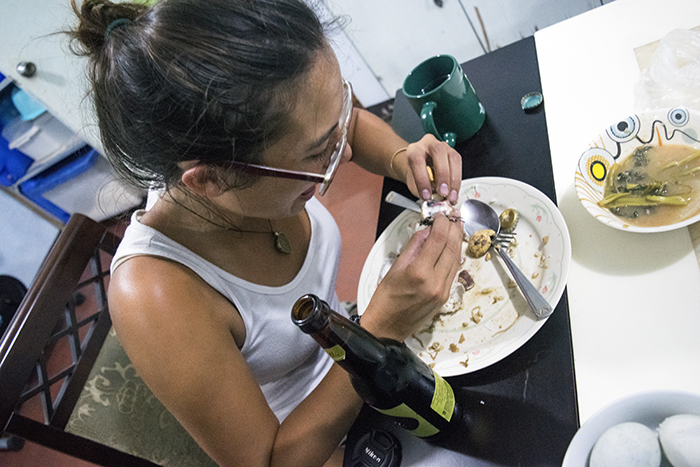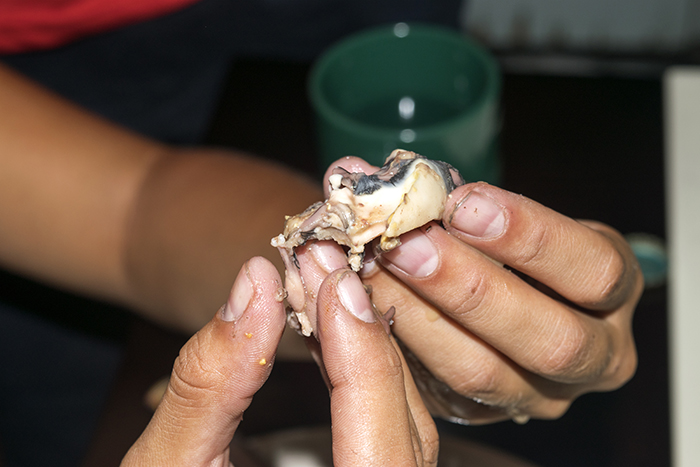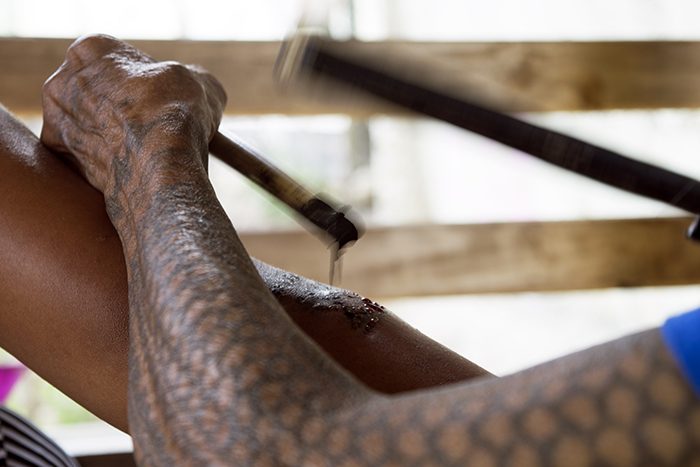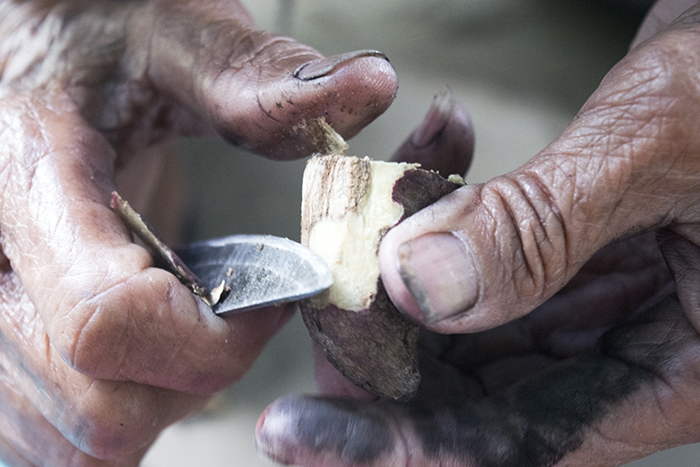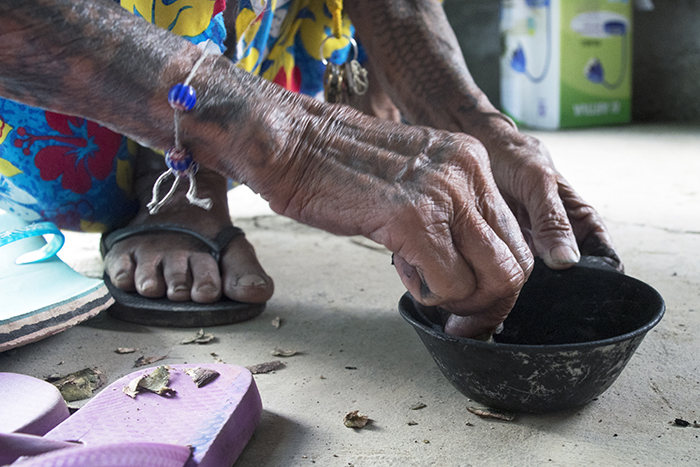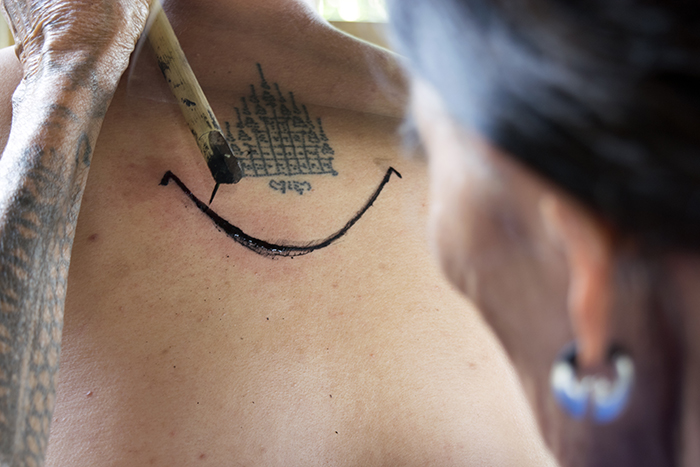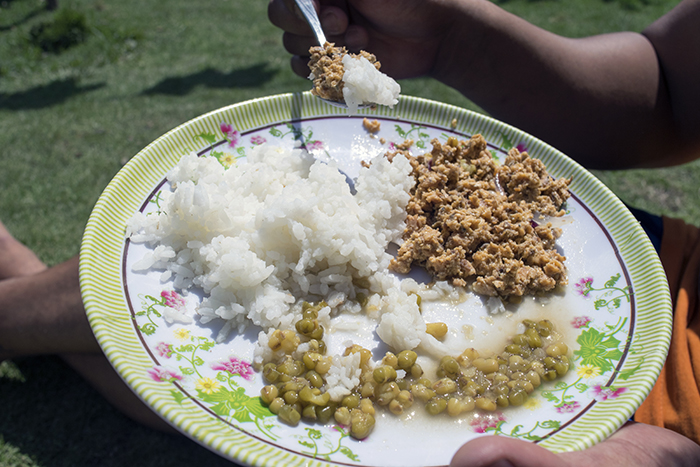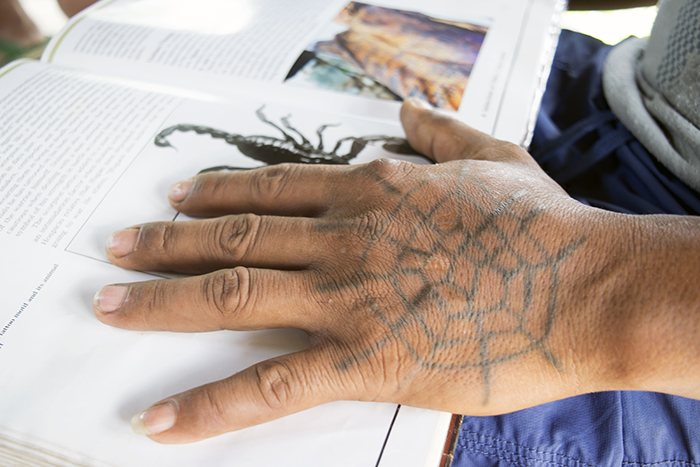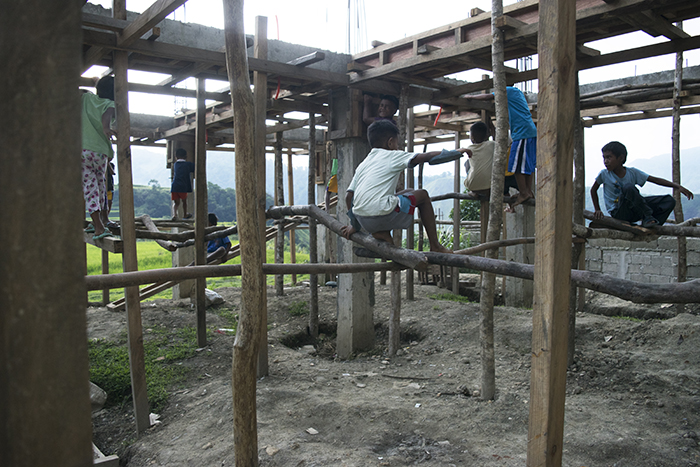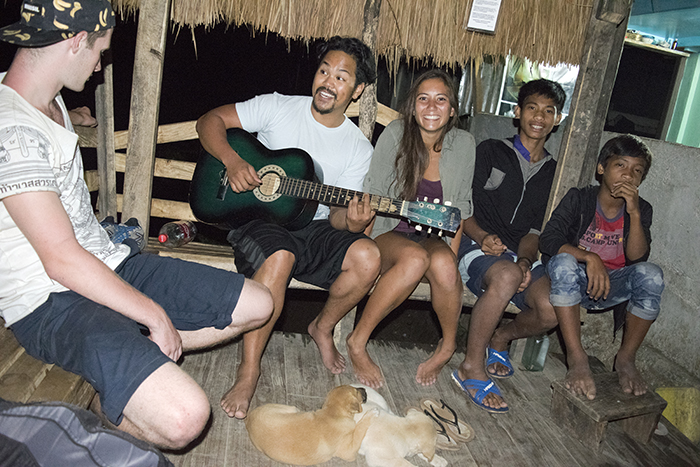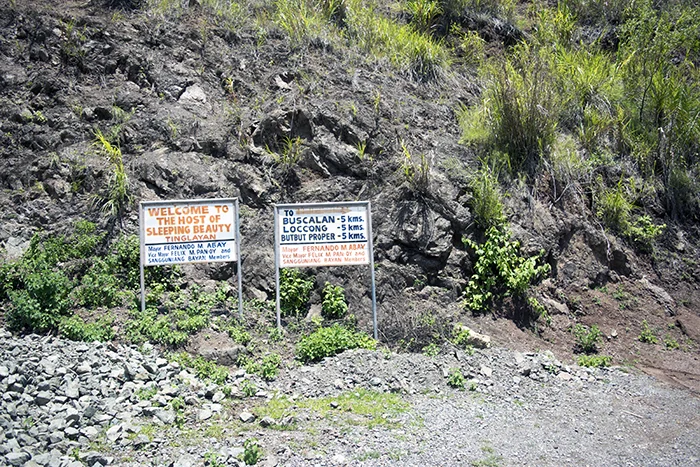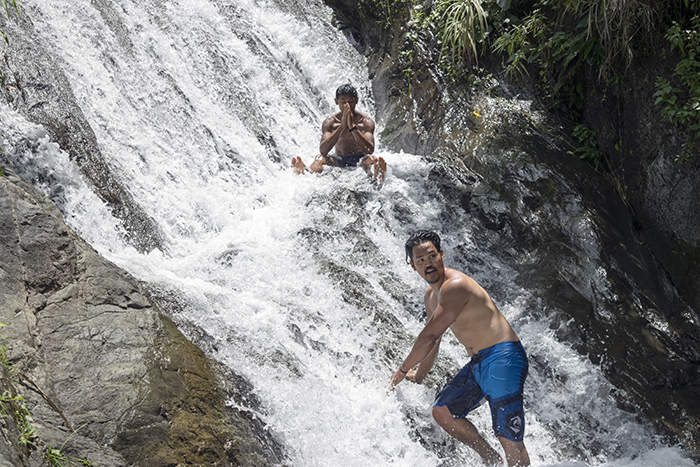Location: Buscalan Village, Kalinga, The Philippines
When we arrived at the village, Ralley took us to his parents’ house, which sat on the very edge of the mountain, overlooking the whole valley. A bright string of the family’s drying laundry framed one of the most incredible mountain landscapes I’d ever laid eyes on. Rice terraces studded the surrounding cliffs and everything was a hundred different shades of green.
The house itself was decorated with kids’ drawings. A branch of dried marijuana was tacked above the doorway. Two toddlers ran around in the yard while their mother, a young woman nursing an infant at her breast, welcomed us to her home, offering us coffee, which she told us came from beans in her garden. Ralley explained the situation, how he’d found us wandering up here alone. He left and a few minutes later reappeared, behind him a cheery man with a long, thin black beard, who introduced himself as Richard.
Richard spoke excellent English and told us that he was a guide that worked in the village. He’d never met anyone that had come up here unaccompanied. I wondered if we’d overstepped some sort of rule, like that outsiders weren’t allowed in the area without a guide. Nobody seemed angry, though. Instead, Richard was glad to see us. There weren’t any other foreigners in the village at the moment. He pointed to a hut overhanging the steep mountainside visible from Ralley’s yard.
“Whang-Od is up there now. She is tattooing Grace.” Richard said. We all looked up and noticed, if we were quiet, we could hear the soft clink, clink, clink of bamboo hitting bamboo.
“We will go up there and see her and you may get tattoos by the great Whang-Od. But first you must eat.”
Ralley’s mom cooked canned tuna with lentils, rice, and potatoes that she said were all from the village. I thanked her and shoveled down the welcome meal. When we were all full, Richard led the way to Whang-Od’s workshop, which was down a winding path through the village. The closer I came, the louder the ringing of the bamboo sticks became until finally I reached a cement patio area and found myself standing in front of the legendary mambabatok herself.
Her back was turned to me, her silver-and-black hair tied back in a low bun. She squatted low on a tiny stool. On the ground beside her sat little plastic tupperware full of bloody tissues, a dirty bin of calamansi thorns, and a thick, round, black stone mortar coated in ink. A yellow lanyard with keys dangling off the end was wrapped around her head like a handyman’s tiara. She wore bright, baggy pants patterned with Hawaiian flowers and flip flops.
Grace sat on a stool in front of Whang-Od, looking away from the bleeding, swollen lump of her forearm. Ink and blood blended, leaving her arm leaking a dark, thick syrup.
“Whang-Od and Grace! This is Craig, Tom, and Cassia.” Grace turned to us, smiling through her grimace. Though she was now 5 years older than the picture I’d seen of her online, she had the same soft, pretty features.
“Hello!” She said before Whang-Od slapped the sticks together again and her face wrinkled into cringing discomfort. Whang-Od then stopped and turned to look at her new visitors, running her gray-eyed blank gaze over us. When her eyes lingered on me and met mine, I felt my breath choke in my throat. She was the most beautiful, regal woman I’d ever seen. Her face, a maze of wrinkles, held a commanding, delicate natural beauty. She was small and slender, but obviously strong. And she was covered in faded, silver-blue tattoos, and the patterns gave off the same complicated beauty of a Copperhead’s scales, flowing gracefully with her movements. She wore royal blue t-shirt with the red Superman insignia across the front.
Whang-Od said something in the local dialect, nodded, and turned back to her work.
“Whang-Od welcomes you!” Richard said, waving his arm. “Here, you may watch and look at the book of designs.”
Craig, Tom, and I spent the next hour and a half chatting with other locals hanging out in the tattoo parlor, watching Whang-Od decorate Grace’s arm with a badge of beauty. We mulled over the heavy book on traditional tribal tattoos and their meanings. One in particular caught my eye; zigzagged, simple design of lightning. Lightning symbolized two souls in a single body and it reminded me of my own identity: half-Irish, half-Filipina.
When the villagers found out I was half-Filipina, knew a little Tagalog, and had traveled to the Philippines alone to learn about my mother’s homeland, it caused a small uproar. Richard stopped Whang-Od again to tell her. Whang-Od turned to me with those piercing eyes and I felt like she could see through my skin and into my soul. She spoke quietly, her slender, ink-stained fingers still poised around her bamboo needle.
“Whang-Od says you are beautiful.” Richard said. I blushed and said ‘thank you,’ my heart bursting with happiness, knowing that no other compliment could probably ever compare to that moment.
The afternoon went on and Craig and Tom took turns sitting before Whang-Od and receiving the artist’s mark. Craig got the symbol of an eagle tattooed on his back, a dedication to communication and travel. Tom had a scorpion hammered into his shoulder as a mark of strength. I asked Grace for advice on my own tattoo and to my surprise, she opened up the book to the same lightning design I’d pondered earlier.
“It’s of the mountains, the river, and lightning. The river symbolizes Naguilian, where your mother is from. The mountains are Kalinga. And the lightning is dual souls. It means the circle of life. Your mother was born here and left and you have returned to this place, completing the circle.”
I couldn’t have imagined a better tattoo idea to represent this moment in my life.
It was late in the afternoon. After she finished Tom’s tattoo, Whang-Od announced that she was finished with her work for the day. There was not enough light for her to see, anymore. So Tom, Craig, and I made arrangements to stay with Ralley’s family for the night. The next morning at dawn I would come back to the parlor and Whang-Od would tattoo me.
That night turned out to be a celebration. A man, originally from the region and who now lived in Baguio, had returned to visit and receive another tattoo from Whang-Od. He bought a pig to slaughter for the whole village to feast together. Men skinned the pig, and then boiled the meat in a thin broth. Craig, Tom, and I sat in a circle on the floor with the man from Baguio in Whang-Od’s home, Ralley’s father, and Richard. We ate the fatty pork with our fingers, dipping it in broth and scooping it up with balls of rice. We drank the soup from plastic bowls.
Afterwards, we sat in the tattoo parlor overlooking the profiles of the mountains, which were shadowed black under the indigo sky, and we drank beers and sang along as Craig played the villagers’ favorite Bob Marley hits on the guitar.




